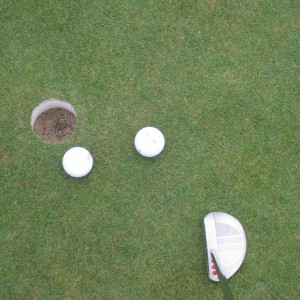Making green speeds faster slows a round down
Related Articles
A significant study on golf green speeds has found that making the surface faster actually increases the length of time for golfers to play a round on that course.
The perceived long length it takes to play a round of golf is one of the most cited reasons why participation in the game has been dropping in recent years and, to combat this, many amateur golfers have called for the length of grass on greens to be set at a height in which the golf ball moves the quickest on it, the speed of which is usually measured by a Stimpmeter.
While the source for the study is a bit convoluted, it found that for every foot over nine on the Stimpmeter – the distance travelled by the golf ball between the device and where it rests – the length of the round increased by about 10 minutes (according to the USGA, 8.5 feet on a Stimpmeter constitutes a ‘fast’ green for a golf course, although it recommends 10.5 feet for the US Open).
According to blogger Geoff Shackelford, the study was brought up by Stuart McColm, general manager of Castle Stuart Golf Links, at a recent R&A ‘Time for Golf’ summit. McColm, states Shackelford, was quoting a study on green speeds by Dansk Golf Union in Denmark.
However, in the 2013 book Golf’s Pace of Play Bible: A Practical Guide and Plan for Improving Golf’s Pace of Play and the Science Behind It, by Lucius J Riccio PhD, it is stated that every foot of green speed per green adds up to 15 minutes to a round of golf.
According to the contributing editor of Golf Digest, Bob Carney, the industry’s fixation with faster green speeds is slowing the game down.
“Our demand for fast putting surfaces has added time,” he said. “We putt with crankshafts and make strokes so tentative and fearful our playing companions want to yell, ‘it’s good! Let’s go!’
“I remember the day we played the stroke-play club championship qualifier on surfaces running between 12 and 13. It took an hour longer than our usual rounds on greens of nine or ten. Al Radko, the former USGA green section director once said ‘no matter where the golfer is putting from, it should be possible to stop the ball within two feet of the hole’. That sounds easy, but on greens of 11, 12 or 13 it’s rare that weekend players can do it. Instead of tap-ins, he or she must take time to line up that second, and often third, putt … tick, tick, tick … and then dramatise the miss. Fear of three-putting then infects pitches and chips to such greens, requiring more ‘planning’.”


























